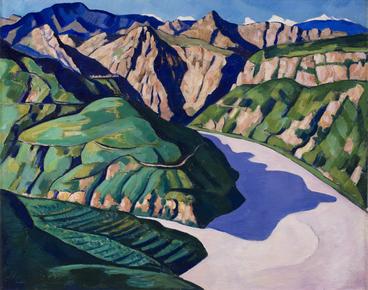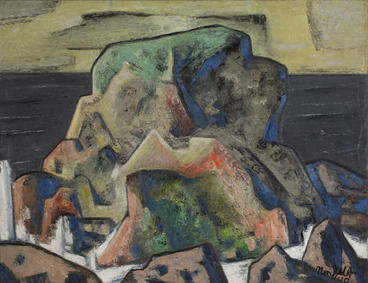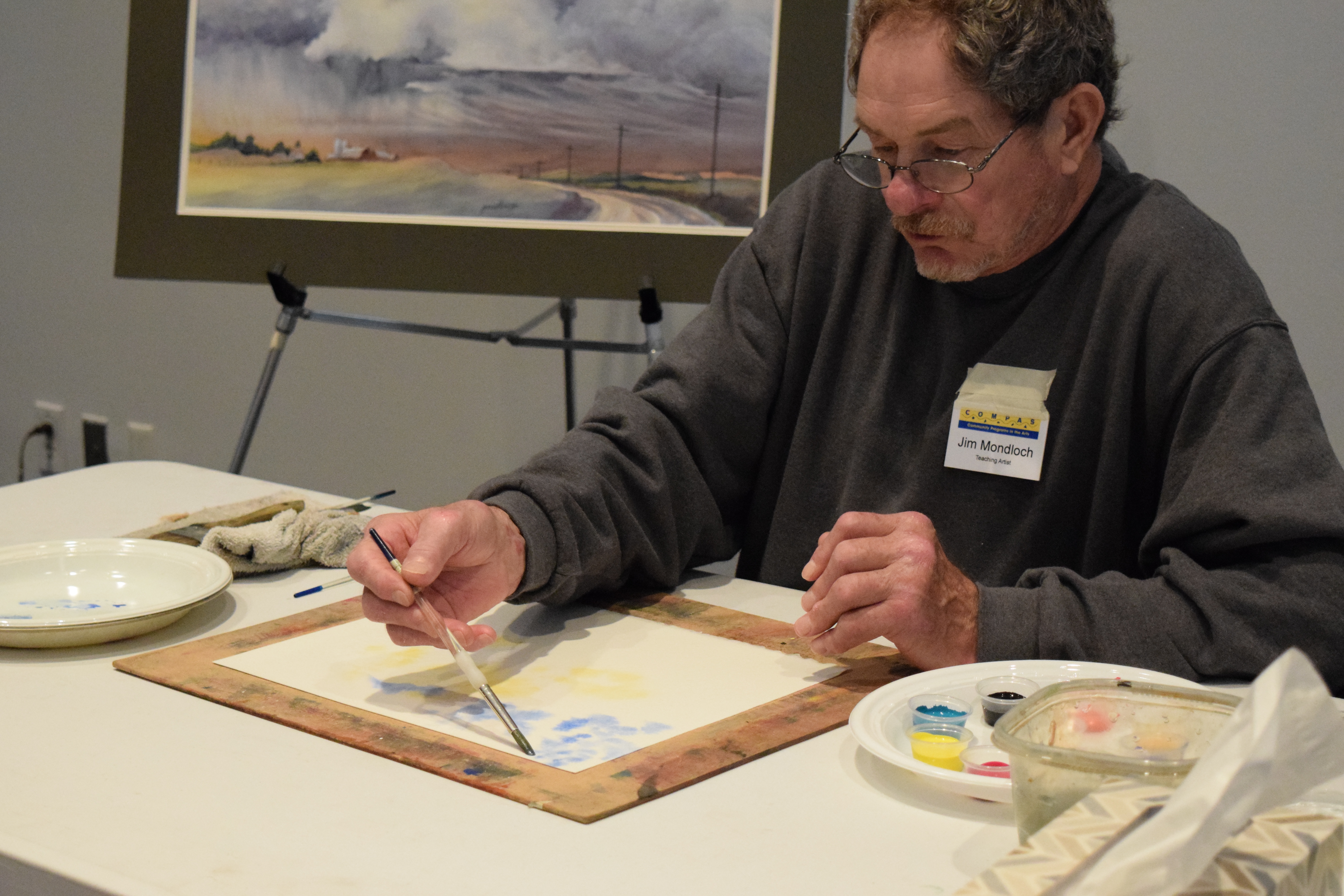
FEATURED ESSAY
The Slow Art Day Watercolor Workshop was held in the Shepherd room at the Weisman Art Museum. There were 6 tables neatly organized with four watercolor palettes and boards on each table. I spent the morning helping the instructor, Jim Mondloch, set up the paints and water containers in the corresponding spots.
Mondloch graduated from St. Cloud State University with a degree in Watercolor and Design, and had studied under many artists. He has a lot of experience in the classroom as well, as he holds workshops for elementary aged kids all the way up to college students.
Students, parents and everyone in between trickled in and found their seats. They looked eager to learn; some had even brought their own canvases and brushes.
While I snapped some photos, I looked around at Mondloch’s portfolio. The majority of his pieces were watercolor or watercolor with gouache or tempera paint layered above it, creating textures of billowing clouds and sprawling fields.
His expertise was evident as his work made me think of home, and I felt a little nostalgic looking at the small barn and farmhouses painted delicately in the crooks of the rolling pastures. All of his work demonstrated precise brush strokes, detailing the branches of trees or a soft rolling wave of a cloud blended into the sky. This was the work of someone who truly understood his paints.
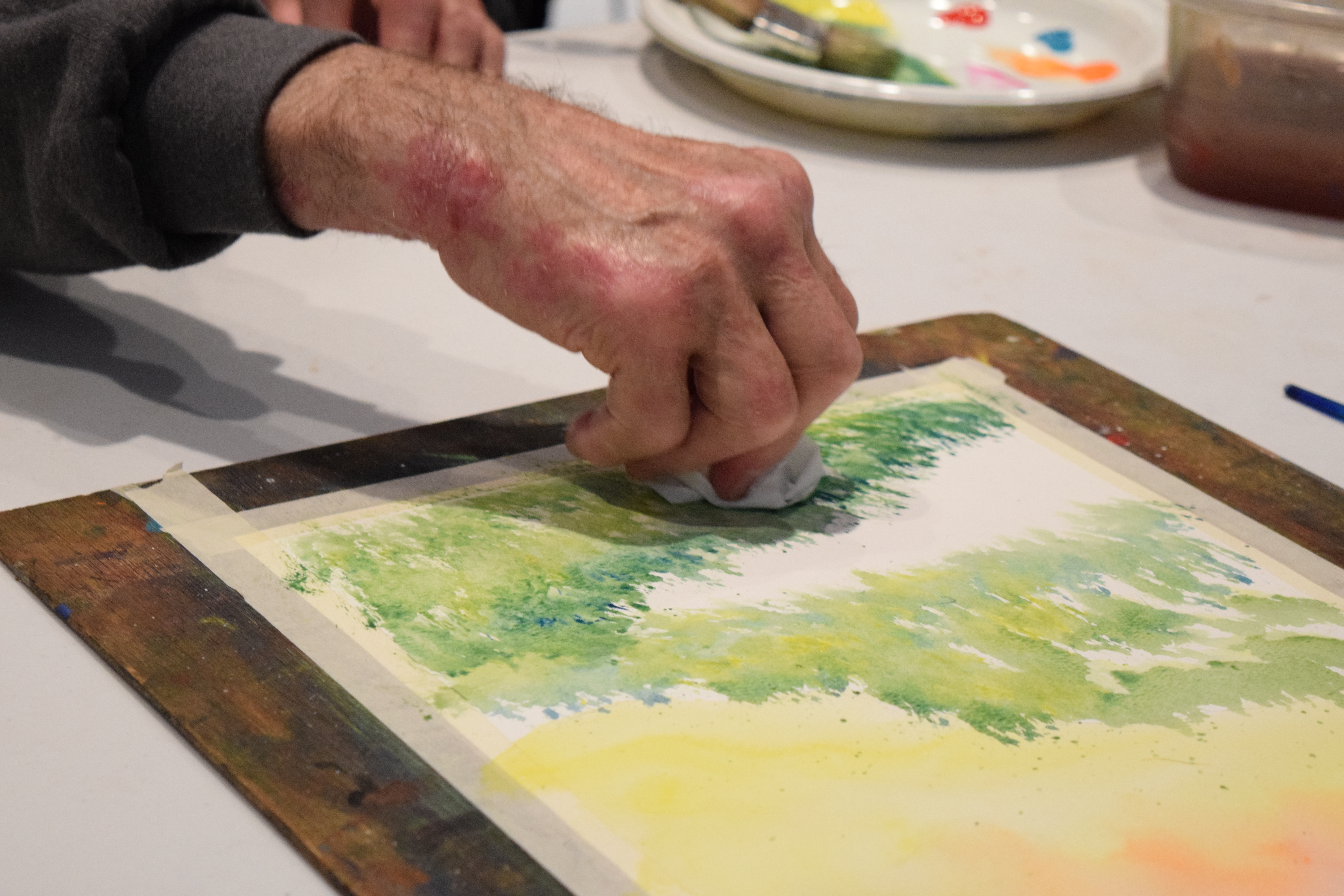
Mondloch had a gentle teaching method. He had the class gather at the front of the room while he demonstrated how to prepare the watercolor paper. He dabbed at the paper with a waterlogged paintbrush then quickly swabbed yellows, blues and small swirls of purple to create the sky while answering questions from the students. He was patient with everyone. If someone used a different technique in their painting, he simply asked questions about their method, complemented their creativity and moved on to the next student.
The students had about 8-10 minutes to work on each section of their painting, which was broken up into about five sections: the sky, the grass, the leaves, the trunk of the tree, and the fence and/or pond.
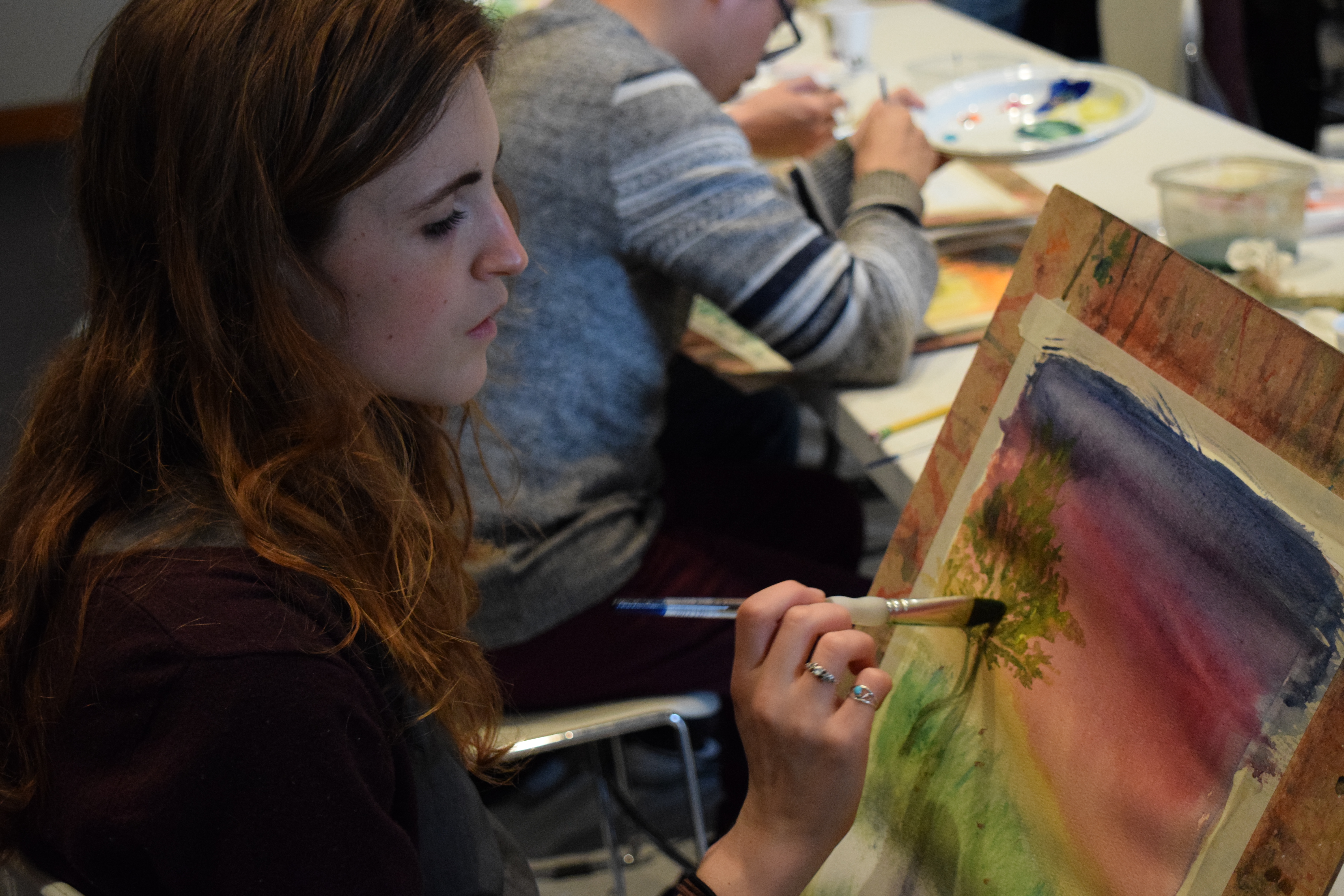
As a design major and fan of painting, I was never a proponent of painting or drawing workshops that instructed people to paint or draw in a specific way. I felt they were unoriginal because everyone created a similar piece of work.
However, as the students completed each step in this workshop, it was interesting to see everyone’s different painting. Some students clearly had experience in watercolor or painting in general. My favorites were the paintings that took their own approach to the steps. One painting depicted a small dinosaur at the base of the tree instead of a small pond or a path.
While I didn’t have time to create my own piece, watching everyone else paint made me realize how much school has made me forget about my old hobbies, such as painting. I was itching to go home and dig out my old notebooks and palettes and use some of the techniques taught during this class.
Towards the end of the class, I contemplated setting my camera down and joining, just because of how enjoyable Mundloch made painting look. He walked around the room slowly while speaking of painting tips and techniques. His soft voice made this process rather soothing. He knew how to create a calm painting atmosphere, and the students’ work was the proof.
